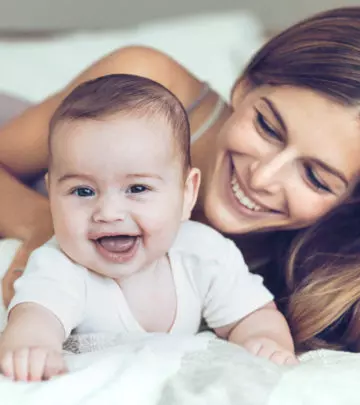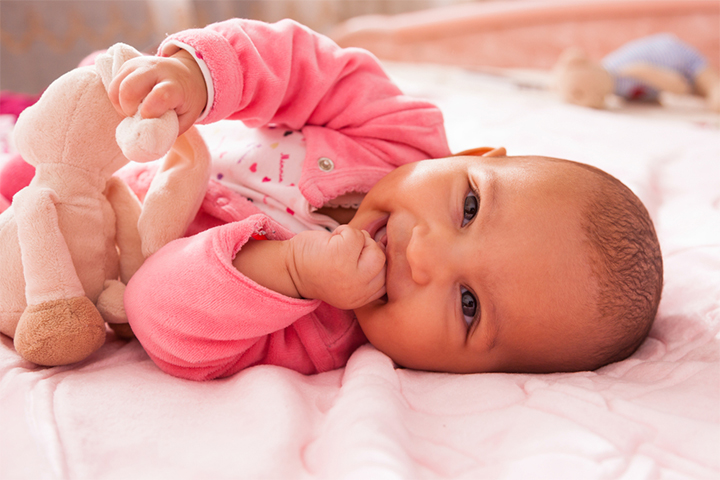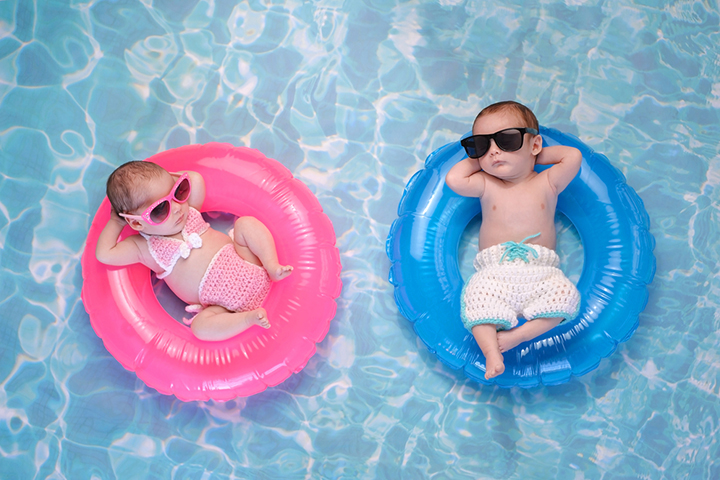
Image: Shutterstock
Babies are cute: they have adorable features that draw us to them, whether they’re boys or girls. But when you have a baby in your arms, you’d be curious to know if it’s a boy or a girl, wouldn’t you? That said, if you were to see a baby’s face only, can you guess their gender? We condition and impose gender identities on babies early on, such as dressing a boy in blue and a girl in pink, but keeping those out for a while — can you still tell the difference between a baby boy and a girl from their faces alone?
Science says “yes”, but only if you try really, really hard — and maybe if luck is on your side! (1). Sounds confusing? It certainly does but let’s break down what researchers have concluded for us: let’s say you have a newborn daughter, she might have a few noticeable feminine features that help you know her gender. That reasserts the fact that specific pronounced differences between the faces of a boy or a girl can be easy to detect. But not everyone can make the correct assumption! Almost all babies look the same, don’t they? — at least in the initial months after their birth. Various factors could impact your ability to confirm the baby’s gender by their faces accurately! What are these? Read on to know more:
Is It Possible To Categorize The Genders From Their Faces Alone?
Image: Shutterstock
Our interactions with people daily are dependent on how we perceive them, at least the immediate facial characteristics that separate them from the opposite gender. And one of the most telltale signs of a person’s gender is their face (2).
But how do we discriminate between the faces of baby boys and girls? SC has long been studied, but if you’re looking for an answer, three studies can help (3). The first study to seek answers to gender categorization in newborns was conducted in 1984 by Richard Potter. They showed photos of baby faces to adults, of which 60 percent could accurately guess the children’s’ gender (4). It could seem pretty average, but the findings put in place a fascinating understanding of our ability to recognize and differentiate the biological differences between the two genders.
In addition to this, a contribution to The British Medical Journal in 2002 surveyed several nurses working at a maternity ward and found that they were far more adept at guessing a baby’s gender just from their faces than random adults (5). So, even without cues during differentiation, like social constructs, gendered clothing, or whatsoever — they got it right!
Furthermore, the most definitive study on this subject was published in Attention, Perception, and Psychophysics in 2011, which confirmed that if you try hard enough, you could successfully tell boy babies from girl babies even without apparent clues. They also found that children and adults can distinguish between the genders of those of a similar age more accurately than not. Scientists selected 120 Caucasian faces (both adults and babies), cropped and presented in black and white to 76 random participants (6). They managed to categorize the faces of the samples more than half the time, thus, re-affirming what we already know — faces of baby boys and girls look different, and we can tell the differences.
How Do You Actually Determine If It Is A He Or She?
Image: Shutterstock
It’s perplexing to read children’s faces — newborns, being even harder. Hormonal changes during puberty alter features, but since young children haven’t yet experienced those, they look similar — chubby, round-shaped, and gender-neutral. Researchers have figured out some possible answers to the above-mentioned question. It is easier to categorize adult faces than infant’s faces. The former is easier because post-puberty, the faces of males and females develop typical features as they set on the road to adulthood: the prominent physical differences that we are better at detecting (7).
Studies show that adults can easily differentiate between the genders by looking at random people’s noses, eyebrows, or eyes. And this has been attributed to evolutionary traits — the need to procreate, that is, selecting a “perfect” mate (8), (9).
Experience also plays a role in determining the child’s gender, as already confirmed in the study involving nurses and doctors. Also, as children grow older, their ability to determine the gender of a person improves. But, despite our individual ability to differentiate between boys and girls, these capacities are relative and ridden with certain biases. For instance, the participants’ most frequent response was “boy” during the whole exercise of gender categorization (10).
Regardless of the age when hormones showcase their effects, the above studies have firmly concluded that we can tell the differences between male and female babies. However, scientists are yet to establish how we do it. Did this information intrigue you? Can you tell the differences between the faces of a baby boy or girl? Do let us know in the comments below!














